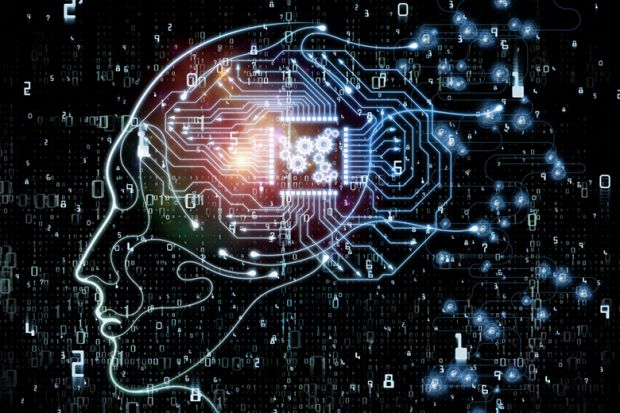This review is not written by a robot. Or is it? How would you know? At a time when robot-written reviews fool academics, publishing circles discuss how (not only whether) robots will peer-review articles, and artificial intelligence dominates popular news (often for the wrong reasons), Joseph Aoun’s new book provides a wake-up call to all of us in higher education.
The message is crystal clear: AI is evolving and, like everybody else, those working in higher education need to evolve too by taking a step back and rethinking how to prepare the next generation of lifelong learners.
Rather than adopting a stance of technological determinism or a dystopian view driven by fear – both common these days – Aoun prefers to acknowledge the significance of human agency and nature in influencing the impact of technology. More concretely, he proposes a learning model of “humanics” based on captivating background research and personal experience that blends subtly into the narrative. This includes, as well as data and technological literacy, what he refers to as “human literacy”, comprising the humanities, communication and design.
Aoun’s argument is based on the premise that, even as machines take over routine labour, they are supposed to be freeing us to explore and lead more satisfying lives. History has shown that education is a catalyst in upskilling the majority of people. This may sound idealistic (and some may worry about the socio-economic impact), but Aoun’s proposition is that education for an age of AI needs to focus not just on technology but also on nurturing our unique capacities as human beings.
Unpacking the model of the three literacies, the book offers concrete suggestions for giving students a competitive advantage over machines. Robots reading this book may not like the lack of prescription and specificity in turning the ideas into lesson plans. But it is addressed to higher education practitioners, appealing to their creativity and relying on their ability to transfer the interesting examples into their own context.
Aoun pays particular attention to the “human literacy” that can help learners ground their technical design and development work, as well as data analysis and interpretation. He then advocates for what he refers to as “cognitive capacities”, meta-skills or modules on critical and systems thinking as well as entrepreneurship and cultural agility.
As the book gets to the heart of the matter, Aoun confronts the biggest limitation of AI: context. It is clear that AI has made great strides over the past few years, mostly because of cheaper processing and the availability of data, but also because of the redefinition of the problem to which it offers a solution. But, despite some small successes in still constrained domains, context remains a major challenge. This is where Aoun identifies an opportunity and a responsibility to cultivate the human lens that allows us to interpret contexts.
He argues succinctly that experiential learning makes learners robot-proof by giving them opportunities to transfer learning from one context to a completely different one. He also advocates encouraging students to engage with a diversity of perspectives. The book concludes with a call for a tighter coupling of higher education with businesses to determine the skills gap and embrace lifelong learning. Only then can higher education shape the opportunities of the AI age and respond to its challenges.
Manolis Mavrikis is reader in learning technologies at University College London. His research focuses on designing evidence-based intelligent technologies that provide direct feedback to learners.
Robot-Proof: Higher Education in the Age of Artificial Intelligence
By Joseph E. Aoun
MIT Press, 216pp, £19.95
ISBN 9780262037280 and 9780262344302 (e-book)
Published 26 September 2017




